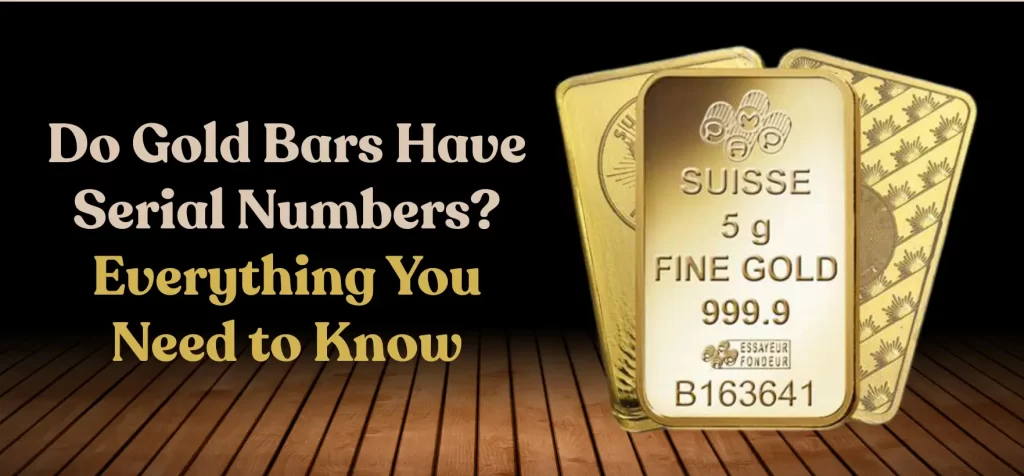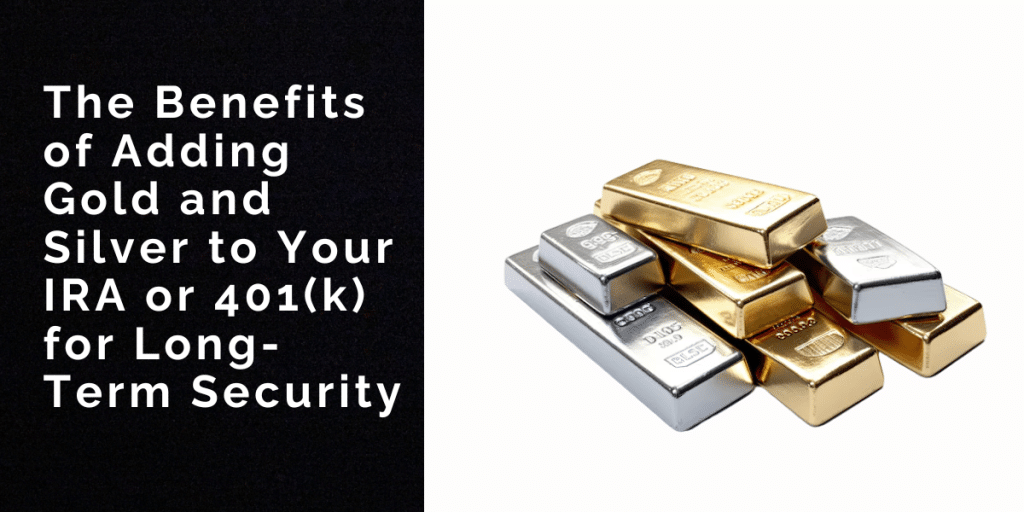Do Gold Bars Have Serial Numbers? Everything You Need to Know
When it comes to investing in precious metals, gold bars are among the most trusted and tangible assets. But if you’re new to gold investments—or even if you’ve already purchased gold bars—you might be wondering: Do gold bars have serial numbers? The short answer is yes, most gold bars do. But there’s more to it than just a number etched into a shiny surface.
In this blog, we’ll explore why gold bars have serial numbers, how they work, what to look for when buying gold, and how serial numbers can protect your investment.

What Are Serial Numbers on Gold Bars?
A serial number on a gold bar is a unique identification code assigned by the manufacturer. Think of it as the bar’s personal fingerprint. This number, often etched or stamped on the surface, plays a critical role in tracking, authenticity, and security.
Why Do Gold Bars Have Serial Numbers?
Gold bar serial numbers serve several important purposes:
- Authentication – Serial numbers help verify that a bar is genuine and comes from a reputable mint or refinery.
- Tracking & Traceability – They provide a record of origin, allowing you to trace the bar’s production and ownership history.
- Security – In case of theft, lost shipment, or resale, the serial number acts as a crucial piece of evidence.
- Investment Documentation – For investors, serial numbers are often listed on purchase receipts and certificates of authenticity, creating a paper trail for insurance or resale.
The Role of Serial Numbers in Gold Authentication
Serial numbers play a vital role in authenticating gold bars. When a bar has a unique identifier, it can be cross-referenced with the mint’s records or assay certificate. This process ensures that the bar is not counterfeit, hasn’t been tampered with, and retains its market value. It’s one of the first things experts check when verifying a 1 OZ gold bar or any other investment-grade bullion.
Common Practices for Serial Number Placement
The placement of serial numbers varies based on the mint and the manufacturing method. For most minted bars, the serial number is located on the front or back surface, typically beneath the logo or purity stamp. Some bars, especially those sealed in tamper-proof assay packaging, will have the serial number both on the bar and on the packaging. Cast bars may have the serial number stamped directly into the metal, often at the bottom.
Do All Gold Bars Have Serial Numbers?
While most larger investment-grade bars (especially those from well-known refineries) have serial numbers, not all gold bars do. Here’s a breakdown:
✅ Bars That Typically Have Serial Numbers:
- 1 OZ gold bars and above
- Bars from major mints such as:
- PAMP Suisse
- Valcambi
- Credit Suisse
- Royal Canadian Mint
- Perth Mint
- Gold bars in assay packaging (tamper-proof sealed packaging with certification)
❌ Bars That May Not Have Serial Numbers:
- Small fractional gold bars (e.g., 1 gram, 5 grams)
- Hand-poured or cast bars from small or private mints
- Older vintage bars (prior to modern standards)
How Are Gold Bar Serial Numbers Formatted?
Serial numbers can vary in format based on the mint. Here are some common styles:
- Alphanumeric (e.g., AA123456)
- Purely numeric (e.g., 000123456)
- Short codes (e.g., 45678)
Each mint or refinery follows its own serialization system. Some include batch numbers, production year, or even a mint-specific prefix.
What Other Markings Are Found on Gold Bars?
Besides the serial number, legitimate gold bars usually include:
- Refiner’s logo or hallmark
- Weight (e.g., 1 OZ, 100g, 1 kilo)
- Purity (usually .999 or .9999 fine gold)
- Assayer’s mark (a seal of verification from the mint)
These markings further validate the authenticity and quality of the bar.
Why Serial Numbers Matter to Investors
For both seasoned and first-time investors, serial numbers provide peace of mind. Here’s how:
✅ Resale Confidence:
Dealers and buyers prefer bars with serial numbers, especially if they match the assay certificate.
✅ Storage and Insurance:
Many depositories and vault services log serial numbers for insured storage and detailed inventory.
✅ Fraud Protection:
In case of counterfeit or tampering, a serial number helps identify irregularities and supports legal claims.
Why Do Gold Bars Have Serial Numbers?
Gold bar serial numbers serve several key functions:
- Authentication
- Tracking
- Security
- Investment Documentation
Whether it’s a small 1 OZ gold bar or a Kilo Gold Bar, serial numbers provide assurance and traceability.
Serial Number Formats and Other Bar Markings
Gold bar serial numbers may appear in:
- Numeric sequences
- Alphanumeric codes
- Mint-specific formats
You’ll also find:
- Weight (e.g., 1 OZ, 10 OZ)
- Purity (.999 or .9999)
- Hallmarks from the refiner
- Assayer’s stamp
What Is an Assay Certificate and Why It’s Important
An assay certificate is a document verifying a gold bar’s authenticity, issued by the mint. It often includes:
- The bar’s serial number
- Purity and weight
- The signature of the assayer
When purchasing a gold bar, especially online or from a dealer, ensure the assay certificate and serial number match the physical bar.
What If a Gold Bar Doesn’t Have a Serial Number?
If a gold bar lacks a serial number, it doesn’t automatically mean it’s fake. However, proceed with caution:
- Verify the reputation of the mint or dealer
- Look for other markings like purity and hallmark
- Have it tested or appraised by a trusted professional
Buying gold bars without serial numbers may be acceptable in some cases, but it can complicate resale, storage, and valuation.
How to Verify a Gold Bar’s Serial Number
- Cross-check with the assay card or packaging
- Contact the mint or dealer to verify the serial
- Use third-party authentication tools or services if available
- Consider a professional assay test or x-ray fluorescence (XRF) scan for high-value bars
Buying Gold Bars Online? Here’s What to Check
When buying gold bars from online marketplaces or dealers, always:
- Choose reputable sources
- Ask for clear photos of the bar and serial number
- Request the assay certificate
- Confirm the return policy in case of discrepancies
Frequently Asked Questions (FAQs)
1. Do all gold bars have serial numbers?
No, not all gold bars have serial numbers. Generally, investment-grade bars—especially from well-known mints—feature serial numbers. However, smaller hand-poured bars or those from private, less-regulated mints may not include them.
2. What does a gold bar serial number look like?
A serial number can be purely numeric or alphanumeric, depending on the mint. For example, it may look like “000234” or “AB123456.” It’s usually etched or stamped directly onto the bar.
3. Is it safe to buy a gold bar without a serial number?
It can be riskier. Without a serial number, verifying the gold bar’s authenticity, origin, and resale value becomes more difficult. It’s always safer to buy from reputable sources and opt for serialized bars.
4. Can I verify a gold bar’s serial number?
Yes. You can cross-reference the serial number with the mint’s database (if available), compare it to the assay certificate, or ask your dealer for verification. Third-party authentication services can also help.
5. Where is the serial number located on a gold bar?
Usually, it’s located on the front or back of the bar, along with weight and purity information. Some gold bars also display it on the packaging or assay card for added security.
Final Thoughts
So, do gold bars have serial numbers? Yes—most investment-grade gold bars do, and for good reason. They’re essential for verification, traceability, and investment security. When buying gold, always pay attention to the serial number and ensure it matches accompanying documentation. It’s a small detail that plays a big role in protecting your precious investment.
If you’re looking to buy certified gold bars or want expert guidance on gold investing, feel free to explore our collection at Gibraltar Group—where quality, security, and transparency come first.




